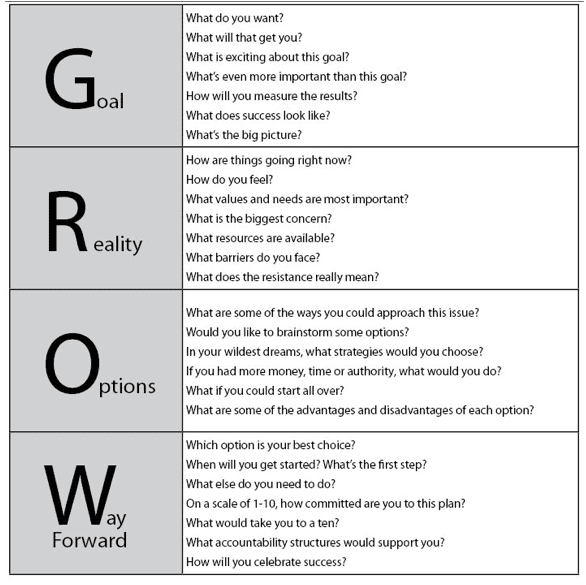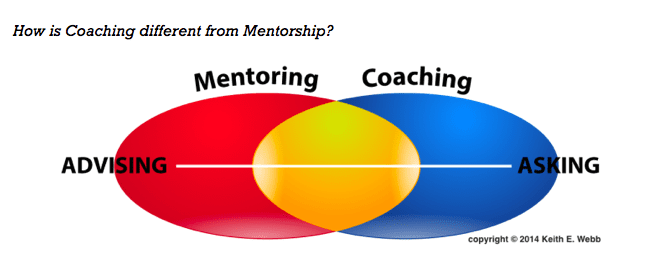Recently I sat across the table from the boss of a leader I was coaching. The three of us were having a lunch meeting and part of the agenda was for the coachee to share with her boss what she had been working on in our coaching sessions in the past 5 months. It was a powerful session as that learning was shared. What was also fascinating was the feedback my colleague received from her boss. She heard that her work with her team had improved, her confidence at the leadership table had increased noticeably, and her ideas and focus seemed more enhanced in that short time. It demonstrated clearly the power of this work, and set both leaders on a path in their relationship more positive and more productive than had been their previous experience.
What leadership changes create the space for coaching?
Leadership is growing increasingly more complex. Knowing yourself, and your people is crucial territory for a leader that wants to move from good to great! Coaching and being more coachlike as leaders, can add another dimension to our leadership toolbox, creating greater buy-in and more accurate data on which to base decisions. This article will briefly outline what coaching is, why it is important, a simple model and some examples of where coaching has been useful in the organization.
How is Coaching Defined?
There are many definitions of coaching. Recent research of International Coaching Federation, states that coaching is “Partnering in a thought-provoking and creative process that inspires people to maximize their personal and professional potential.” Coaching is a unique conversation had between people where the skill and the will is high. Coaching is not typically successful as a remediation strategy; rather, it seeks to increase the performance of high potential leaders. It creates space to consider new perspectives and ideas from a curious place. Coaching replaces judgement with curiosity, raising trust and collaboration between individuals and teams. In our complex climate of leadership, such openness propels our culture and results to new heights.
What about other types of conversations?
This article does not advocate for coaching conversations alone. Leaders have many conversations: sometimes they coach. The question is how often is each type of conversation used? If leaders were honest with themselves, many have shared that they fall more frequently into the instruct and advise conversations – less in the coaching. It is possible that just tweaking this a little – increasing coaching conversations by 5 – 10% – could have a significant impact.
What does the research say?
Recent studies by International Coaching Federation (ICF) in partnership with leadership development firm, Human Capital International (HCI), discovered that organizations that set out to build a coaching culture had impressive gains to report. The top 5 (of 15 results reported) included:
• 57% improved team functioning
• 56% increased engagement
• 51% increased productivity
• 45% improved employee relations
• 36% faster leadership development.
These organizations took coaching seriously, accessing external coaching, building the internal coaching skills or leaders in the organization, putting significant budget toward this initiative, and providing 1:1 coaching for leaders. The extensive research supporting this data would suggest that it was money well spent.
What does coaching look like in these organizations?
There are many models of coaching, all seem to address the same principals: Using powerful questions, identify a goal, talk through the reality of what someone is experiencing, help them to think about alternative solutions and then ultimately help them to commit to an action plan with some accountability all designed by the coachee.
What does a coaching model look like?
A simple model designed by John Whitmore, grandfather of coaching, follows the acronym GROW. In the table below are sample questions for each stage. The Goal is crucial as in coaching you must be clear about what the coachee is wanting from the conversation. Reality helps identify what the current state is around that goal. Options create the possibilities to be considered and again, are mostly generated through effective questions, by the coachee. And finally, the Way Forward, is the direction or solution the coachee is committed to, with some accountability built in.
(Taken from https://trans4mind.com/counterpoint/index-transformation/transformation18.shtml )
This format for conversations has helped leaders get clarity and be more effective with time, even for shorter coaching conversations.
How is Coaching different from Mentorship?
On his website, Keith Webb talks about how we need both and differentiates as “Mentors Put In” and “Coaches Draw Out”. Further, P. Stanley and R.Clinton in their book entitled, “Connecting” (2014) define Mentorship as:
“Mentoring is a relational process in which a mentor, who knows or has experienced something, transfers that something (resources of wisdom, information, experience, confidence, insight, relationship, status, etc.) to a mentee, at an appropriate time and manner, so that it facilitates development or empowerment.”
International Coaching Federation (ICF) offers this definition of mentoring: “offering guidance from one’s own experience or in a specific area of career development” (2017). This study also stated that 26% of people who said they knew what coaching was, chose the mentorship definition. This seems to be an area of confusion.
Both mentoring and coaching are important, providing different opportunities for learning. It’s also important to be clear about which support the leader is providing and the goal for that growth. It seems easier for leaders to lean into the mentorship or advising role, than to create space for curious questions that allow the other to think through and strategize. This may be a growth opportunity for the leaders at Halton Regional Police, as it is in many organizations.
What does coaching look like in action?
Recently, Halton Regional Police Service has been exploring some of these coaching concepts with various leadership groups and teams. Meeting together to learn about themselves and their teams, through an assessment tool entitled Type Coach Verifier Report (www.Type-Coach.com) has allowed for enlightening conversations.
Deepening that awareness with an understanding of levels of listening, building powerful questions, use and model for feedback and the GROW coaching model, are all components that support this work. Concurrently, some of the leaders have participated in 1:1 coaching, using these strategic conversations to manage their portfolio’s, their teams, and their own aspirations. Finally, some of these leaders have worked to integrate a more coach-like model into their conversations – choosing to ask open, curious questions first, before offering their advice.
What they are discovering is that in lots of situations, when someone can develop and think through their way forward, their responses are stronger and their decisions more impactful. One leader even reported to me after using this approach, that their direct report “came up with ideas I hadn’t even thought of. I was so glad that I didn’t make my suggestions first – theirs were so much better.”
This is especially interesting in the context of policing, where traditional leadership has been hierarchical, and where, at times, the engagement of younger generations, and other stakeholder groups is requiring different leadership responses.
So what?
How does knowing this change anything? If you want to increase your leadership to be more coach-like, practice having a few more ‘coach-like’ conversations with your colleagues or your direct reports – you might be amazed at what a few moments spend in curiosity and effective questions net you and the organization. And so, as a leader, it might be a good question to ponder for your own practice – To Coach or not to Coach?



